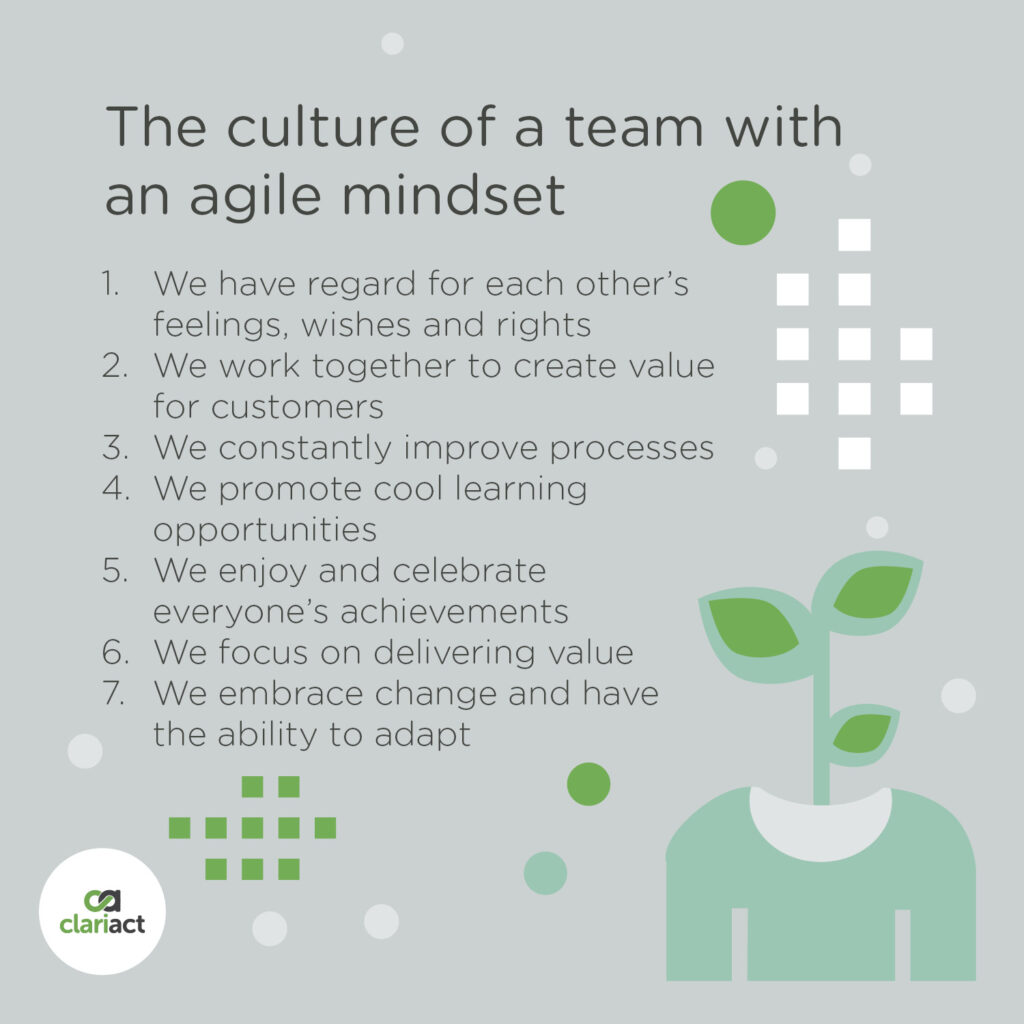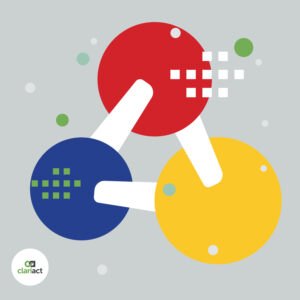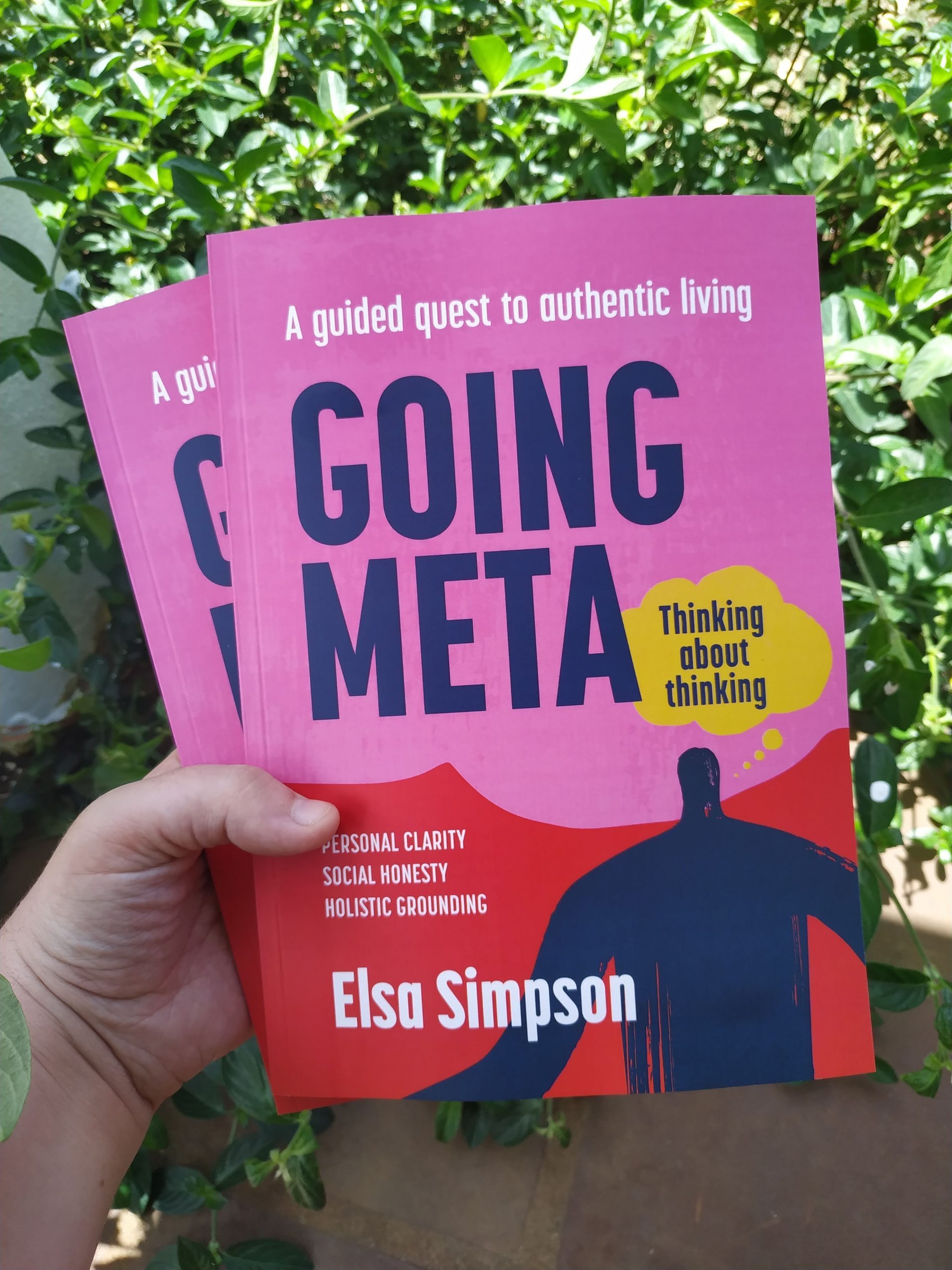According to Ken Blanchard and Lyssa Adkins, agile mindsets enable teams to reach optimal productivity and “astonishing results. Teams with an agile mindset can achieve almost anything. Being a high-performing team takes more than just skills, practices, and values; an agile mindset sets them apart.
Components of the agile mindset
An agile mindset can be cultivated in people by changing the culture of the company to promote certain values and cultivate amore agile culture. An agile mindset is therefore the set of attitudes supporting an agile working environment.
These attitudes include:
- We have regard for each other’s feelings, wishes and rights
- We work together to create value for customers
- We constantly improve processes
- We promote cool learning opportunities
- We enjoy and celebrate everyone’s achievements
- We focus on delivering value
- We embrace change and have the ability to adapt
We have regard for each other’s feelings, wishes and rights
We all want to work in an environment where we feel valued and respected. An agile culture is created when team members have respect for one another. This ensures that everyone acknowledges the valuable contributions that each person makes towards the team. Projects can only be successfully completed when the members believe in each other and respect the product that they are building. Teams with an agile culture have a sense of respect for one another and other members of the broader organization as well as the product or service itself.
An agile approach doesn’t get the work done—people do. When treated with respect, people are empowered to evolve and improve their practices. An agile culture cultivates a positive, safe, performance-centered environment. The principle of respect also extends to relationships with suppliers, partners, customers and the wider community.

We work together to create value for customers
Collaboration between different parts of the organization decreases the number of handoffs necessary to deliver. It is difficult for any single person to handle a wide range of operations within increasingly complex systems. Supporting collaboration through tools, spaces and behavior improves the quality of collaborative discussions and complex problem solving.
We constantly improve processes
Teams with an agile mindset don’t set their processes in stone. These teams have a light hold on procedural adherence. Leaders with an agile mindset always encourage team members to keep learning. The processes used to develop products should simultaneously enhance the company.
An agile culture provides time and space for people to be creative and encourages purposeful innovation. Teams with this mindset constantly explore the market and user needs, getting fast feedback. They focus relentlessly on improvement and learning, and continuously reflect on the enhancement of processes.
We promote cool learning opportunities
Carol Dweck introduces us to the idea of a fixed mindset versus a growth mindset. A fixed mindset is a mindset wherein someone is an expert and believes that their skills are an innate gift and no amount of practice can replicate their abilities. People with this mindset avoid taking risks and only focus on the skills that they already possess. However, a growth mindset is characterized by a willingness to learn new skills. People with this mindset understand that development is a crucial part of the learning process. They always strive to improve their knowledge. Teams with an agile culture support members who take risks and thereby increase the group’s knowledge.
We enjoy and celebrate everyone’s achievements
Leaders with an agile mindset acknowledge and appreciate team member’s contributions, both privately and publicly.. Even though it isn’t always possible to single out individual ownership of teamwork, the team is proud of their collective achievements when their output creates value for customers – pride is taken in it and shared by everyone. Agile leaders know the saying “take blame but share credit.”
We focus on delivering value
The main aim of an agile organization is to deliver value to the customer. The team delivers the greatest value for customers while leaders help to remove any obstacles. The goal is to deliver the maximum possible value to customers in the shortest sustainable lead-time. Teams with an agile mindset can validate innovations with customers while pivoting gracefully when the expectations change.
We embrace change and have the ability to adapt
The ability to adapt to change is a major factor in an agile mindset. Customers change their requirements and teams have to be ready for any kind of challenge. An agile mindset helps us to be comfortable with change. Agile teams are adept at problem-solving and have well-developed reflection skills.





